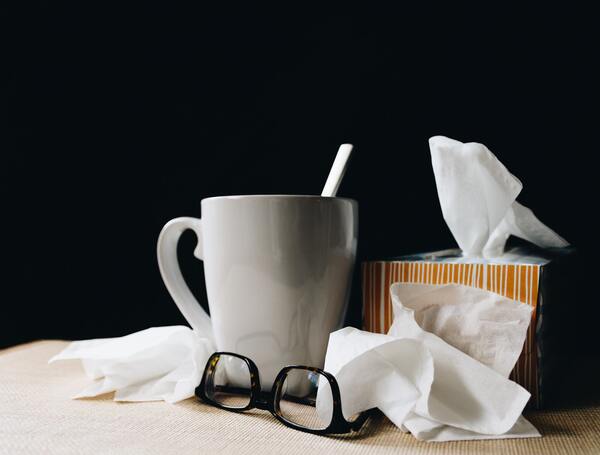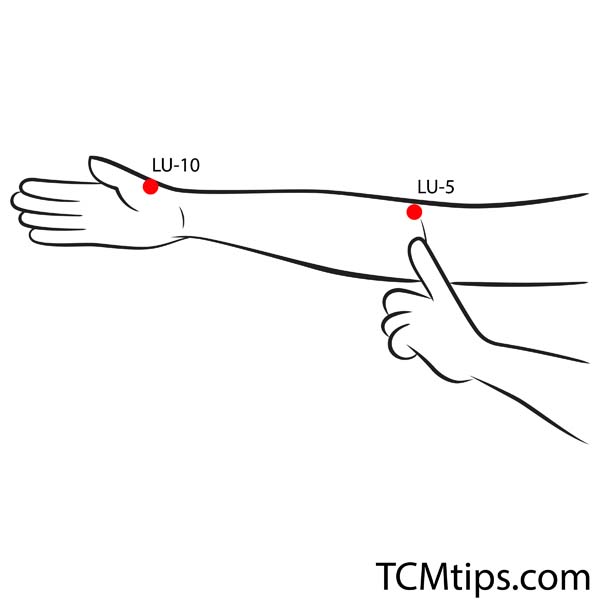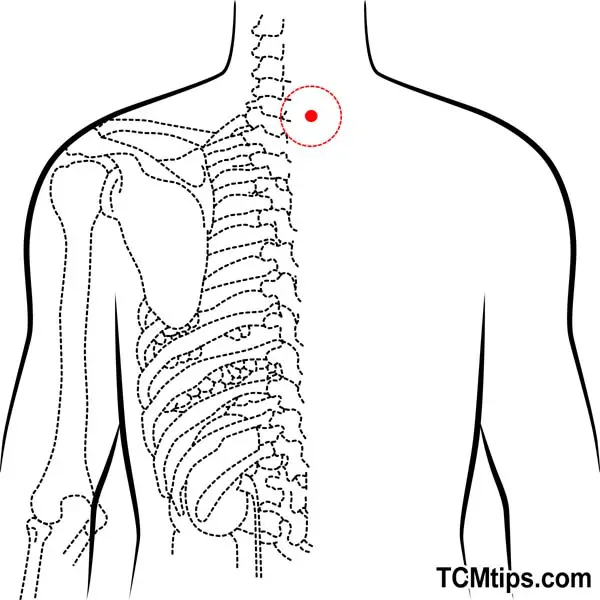Cold is so common that it is called the common cold. However, a common cold can be the reason you’re locked up at home for weeks and are unable to achieve the things you’ve planned for yourself. The common cold is as much uncomfortable as it is harmful to our health. It may not be capable of causing death, but an untreated cold could lead to a more serious medical condition. You need to know the acupressure points for cold to be able to treat the common cold with ease before it escalates into something else.
You need acupressure for cold mostly because the common cold is one of the few medical conditions that does not really need medical attention. Left to heal itself, you can recover from the common cold within a week and ten days. However, it could exceed this timeframe and begin to get complicated. This is sometimes the case if you are a smoker.
It is estimated that a healthy adult can contact common cold two to three times a year, while for children and infants, it may occur more frequently. You really can’t avoid the common cold because it is caused by various kinds of viruses, the most common of which is rhinovirus, and it can be contagious. By touching someone who has a common cold or sharing their items like eating utensils, you could contact the common cold.
The symptoms that manifest to confirm that you have a common cold include a runny nose, sore throat, cough, sneezing, low-grade fever, slight body ache, and a feeling that you are unwell. These are also flu symptoms, but you know it’s not flu from the severity of the symptoms. Whichever case, once you begin to sight any of these symptoms, it’s time to fall back to acupressure for cold.
In this article, I’ll share with you the pressure points to stimulate for the common cold and most of its related symptoms.
Does Acupuncture Help When You Have A Cold?
Yes, acupuncture helps to relieve symptoms of a common cold. A 2018 research provides evidence of how efficient and safe acupuncture is for relieving the symptoms of a common cold. According to this study, traditional Chinese acupuncture for common cold helps to not only relieve the symptoms of a common cold but also promote metabolism circulation and balance, improve your immunity, dredge the meridian responsible for cold, and harmonize qi and blood.
It recommends acupressure sessions for relieving the symptoms of the common cold as the common cold does not have a special medical treatment, and because it is safe, easy to use, cost-effective, and environmentally friendly.
How Does Acupuncture Treat A Cold?

Acupuncture helps to relieve the symptoms of cold by stimulating the immune system to ward off viruses that cause cold. However, it is important to understand the type of cold you have before applying acupressure. In Chinese medicine, colds are two types – cold type and hot type of cold. For the cold type of cold, your symptoms would include clear nasal discharge, chills, and stiff neck, while for the hot type of cold, your symptoms will include fever, sore throat, and sweating.
The cold type of illness does not require cold herbs if you’ll be using herbs, or you’ll end up increasing the duration or severity of your cold. This cold type of cold is the more prevalent kind, and it is usually good to administer acupuncture to it the moment you start noticing the symptoms. This will increase the chances of preventing the old from lingering as acupuncture for cold works by regulating the immune system.
Can Acupuncture Cure Colds?
No, acupuncture does not cure a cold. What it does is reduce the symptoms, which are the unpleasant aspects of a common cold. Acupuncture or acupressure therapy will reduce sneezing, nasal irritation, sore throat, headaches, cough, and general weakness that comes with the common cold and flu. It is also good to note that acupuncture should be used to complement modern medicine, rather than stand-alone, for rapid healing.
Now that we have answered some of your questions let’s head straight to the acupressure points for cold and its related symptoms.
Pressure Points For Fever
In Traditional Chinese Medicine (TCM), fever is the hot type of cold, which implies that a home management technique for treating it is by having a cold bath and washing your head and body. Doing this will cause the heat in the body to melt the impurities that have accumulated in the body. These impurities are excreted in the form of runny nose, sputum, cough, etc.
When you have a fever as a result of a cold, the acupoint below is the right pressure point to massage.
Acupoint: LU-10 (Other Names: Lung-10/Yu Ji/Fish Border)

LU-10 is one of the most important acupressure points for fever and cold. It is called Yuji in Chinese, which translates to Fish Border in English. You’ll find this acupoint on the hand, in the depression in the middle bone of the fleshy area of the palm at the base of the thumb.
In traditional Chinese medicine, stimulating Yuji helps to clear lung heat as well as unlock a number of benefits to the throat. It is for this reason that this lung meridian acupoint is effective in the treatment of asthma, cough, and sore throat, in addition to fever. It can also serve as acupuncture for hand pain.
To properly stimulate Yuji and unlock its antipyretic effect, apply firm pressure on the acupoint for about 5 minutes.
Pressure Points For Feeling Cold
Sometimes, when you have a cold, it’s just that feeling of cold you have and not the other symptoms that come with it. Below is one of the acupressure points for feeling cold.
Acupoint: GV-14 (Other Names: The Governing Vessel-14/Da Zhui/Great Vertebra)

The second of the acupressure points for cold, especially relating to the feeling of cold, is GV-14. This acupoint, called Dazhui in Chinese, is one of the most important acupoints when it comes to releasing exterior wind and treating wind-heat or cold. Unlike the first acupoint, Dazhui is found at the back. As its name suggests, Dazhui is found in the depression below the 7th cervical vertebra, known as the great vertebra. It is the bone that bulges at the back of your neck when you tilt your head forward.
As it functions as an expeller of heat, Dazhui is well suited to treat issues like febrile disease, swelling of the eye, neck pain, malaria, fever, and, of course, the common cold. To stimulate this acupoint, applying firm pressure is not enough. You have to warm the skin around the acupoint. A hair dryer or a body warmer can do the job for you. You should also use GV-14 as acupressure for sinus inflammation.
Pressure Points For Running Nose, Sneezing
Acupoint: LI-20 (Other Names: Large Intestine-20/Ying Xiang/Welcome Fragrance)

When the major cold symptom you have is a running nose and sneezing, you need LI-20, one of the effective acupressure points for cold and running nose.
LI-20 is one of the acupressure points for cold and sneezing that you don’t want to forget. It is called Yingxiang in Chinese, which translates to Welcome Fragrance. This acupoint is located on the face, beside the curved base of the outer part of the nostril, at the beginning of the laughter line.
In Traditional Chinese Medicine, this Large Intestine meridian acupoint serves to dispel wind, clear heat, and open the nasal passage. This is why it is one of the acupressure points for a cold and blocked nose as well as wry faces, epistaxis, and biliary ascariasis.
To stimulate LI-20, it’s best to use the pad of your middle finger to apply gentle pressure on the acupoint. Do this in a circular motion slowly for 15 times, and you will feel a huge relief, especially when used as acupressure for inflammation.
Pressure Points For Cough
Cough is one of the most common symptoms of common cold, and in TCM, this is caused by wind pathogen which, depending on the time of the year, works together with cold, heat, or dryness pathogens. If cough is your major symptom of cold, then you need acupressure for the cold and cough discussed below.
Acupoint: Ren-22 (Other Names: The Conception Vessel-22/Tian Tu/Heaven Projection)
Ren-22 or Tiantu, as it is called in Chinese, is one of the dry cough acupressure points for cough and cold that you must know. It is located in the deep hollow at the base of the midline of your neck, between the beginning of the collarbones.
In TCM, Ren-22 serves the function of subduing rebellious Lung Qi, resolving phlegm, benefitting the throat, and, of course, stopping cough. Based on this and its location, Ren-22 is the best acupoint to treat cough, asthma, chest pain, and goiter. It also serves as acupressure for sore throat.
All you have to do is apply pressure on this collarbone pressure point with your index finger and warm the skin around this point with either a hair dryer or a body warmer. Since it would be painful to push this acupoint into your throat, it’s best to push it against the back of your collarbone.
Acupoint: LU-5 (Other Names: Lung-5/Chi Ze/Cubit Marsh)

LU-5 or Chize is another of the acupressure points for a cold that you can use for cough. Chize is located on the hand, just like the other lung meridian acupoint listed in this article. However, unlike LU-10, LU-5 is located around the elbow. You’ll find it at the elbow crease when you bend your elbow, at the point on the same line as the thumb.
In TCM, Chize is responsible for clearing heat, descending the LungQi, relaxing the sinews, and freeing water passages. This makes it ideal for treating cough, asthma, sore throat, infantile convulsions, and elbow pain.
To stimulate this pressure point on the forearm, press the acupoint 3 times for 10 seconds each. Do this for both hands.
Acupoint: EM-20 (Other Names: Ding Chuan)

The last of the acupressure points for cough is EM-20. This acupoint is called Dingchuan in Chinese, which translates to Stop asthma. Dingchuan is located close to GV-14. You’ll find it beside the 7th cervical vertebra, about a finger-width from it, and on both sides.
Just as the English name suggests, EM-20 in TCM is primarily responsible for stopping asthma. Its other responsibilities are to dispel wind and stop cough. This is why EM-20 is mostly used to treat asthma, shortness of breath, and sore throat. It is one of the acupressure points for the ungs.
All you have to do to unlock the healing benefit of this acupoint is to apply gentle pressure on it for about a minute.
Acupuncture For Cold Sores
You can get sores from a cold. This sore is caused by the herpes virus and it gathers mostly around your lips. Do not be scared of the mention of herpes, the cold sore isn’t that bad, and 90% of people around the world have one form of Herpes Simplex Virus (HSV), the virus responsible for cold sores.
With ST-36, the acupuncture for cold sores, you don’t have to fret when these sores gather about your lips.
Acupoint: ST-36 (Other Names: Stomach-36/Zu San Li/Leg Three Miles)

ST-36 or Zulsani, as it is called in Chinese, is a vital acupressure point in TCM that serves as acupuncture for cold sores. You’ll find Zulsani on the lower leg. It is four finger-width from the indentation on the side of the leg, below the knee plate, and just around the head of the tibia.
Zulsani is known as the command point of the abdomen in TCM. This makes it effective for treating gastric pain, constipation, abdominal pain, and cough, in addition to cold sores. Zulsani also works as acupuncture for eye bags.
Stimulating ST-36 for cold sores improves your immunity. Where there is a strong immune system, herpes labialis will not surface.

Try our Anti-Aging Gua Sha Tool designed to bring out your skin’s natural glow.
Best Gua Sha Product- Anti-Aging: The tool is designed to target 11 specific aging signs such as wrinkles and sagging skin. By following the 7-step routine, users can improve skin firmness and reduce fine lines naturally.
- Enhances Skincare Routine: It works effectively with serums and lotions, boosting absorption and efficacy of skincare products.
- Visible Skin Improvement: Users can expect a smoother complexion, reduced puffiness, and a more youthful appearance.
 P. Sze
P. Sze 

















